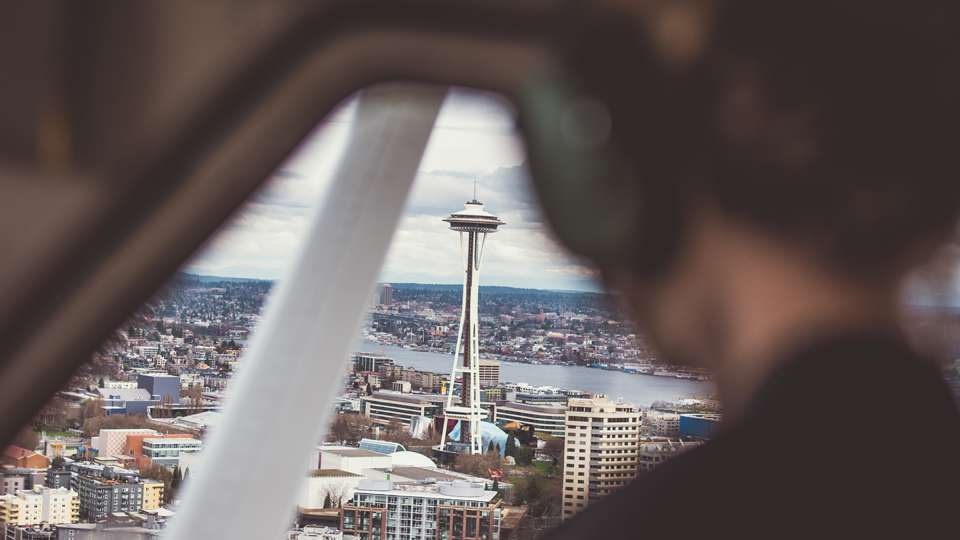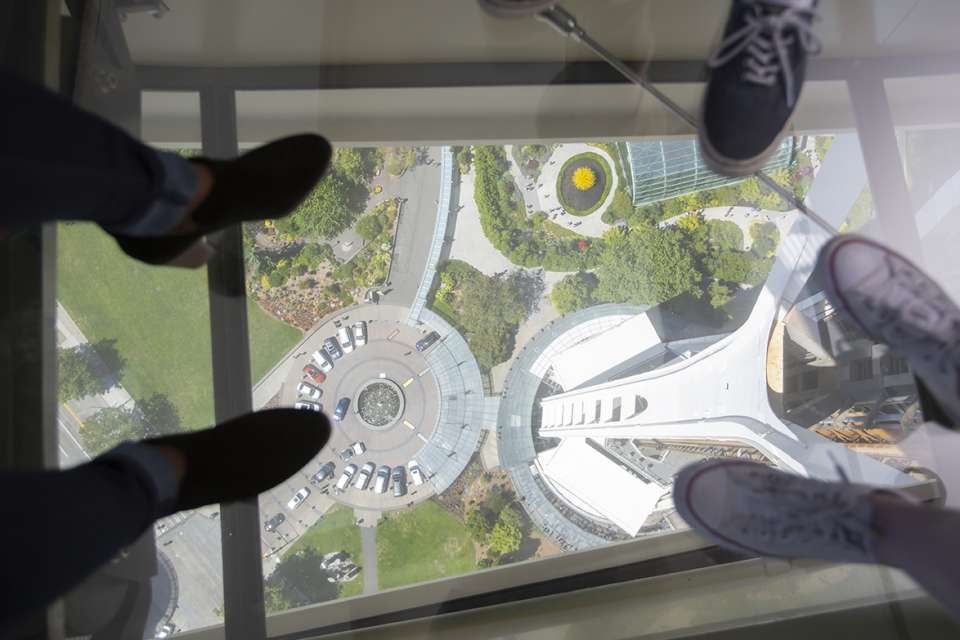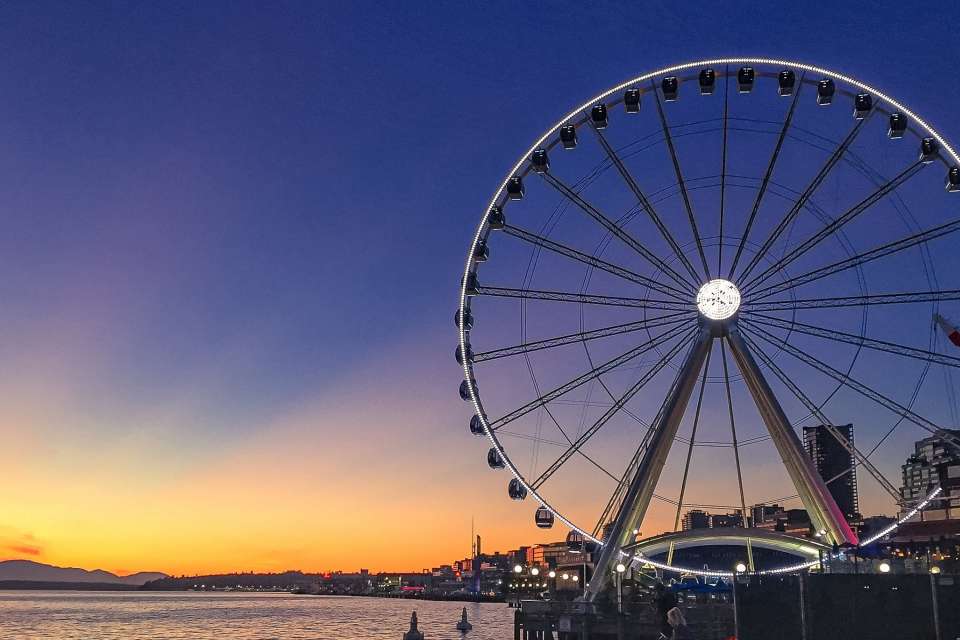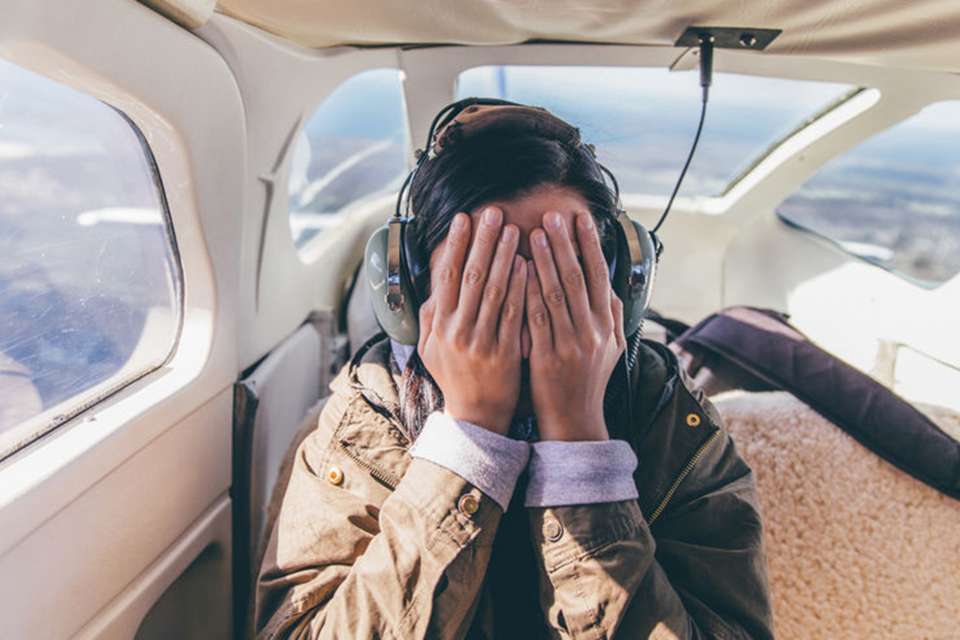Ready to Conquer Your Fears? Try These 13 Seattle Experiences

“Do one thing every day that scares you,” wrote journalist Mary Schmich in a 1997 Chicago Tribune column.
Her now-famous words are the inspirational poster quote for countless people today. (Just check out Pinterest.) But real talk? Facing your fears isn’t so easy. It can be, well, scary.
Fear is what makes your heart race and palms sweat in everyday situations. It’s what lets you conjure up a zillion awful scenarios in your head that fly against all your better judgment.
When it’s an intense, maladaptive fear — aka a phobia — it elicits an out-of-proportion reaction that prevents you from doing what you really want to do. Like taking that flight on your dream vacation. Or going to a pumpkin patch with your friends because there are too many people around.
An estimated 12.5 percent of American adults have experienced a phobia at least once in their lives. So what can you do when the FOMO is real and you’re finally ready to conquer that fear — or at least learn how to handle it better?
According to Michele Bedard-Gilligan, Ph.D., a practicing clinical psychologist at the University of Washington Medical Center-Roosevelt in Seattle and assistant professor in the Department of Psychiatry and Behavioral Sciences UW School of Medicine, take Schmich’s advice. What Bedard-Gilligan recommends is something called exposure therapy.
“Exposure therapy is the gold-standard treatment,” she says of overcoming fears and phobias. “That involves approaching the stimulus and having corrective learning experiences to realize that the bad outcome doesn’t happen.”
The idea here is that by repeatedly exposing yourself to a situation or object that scares you, you’ll be trained to realize that the worst-case scenario you were dreading doesn’t happen or that you can actually tolerate it better than you thought.
This doesn’t mean that if you have a fear of dogs (cynophobia) you should immediately visit an off-leash dog park and present your arm as a chew toy to the first canine you see. Exposure therapy is a series of gradual guided experiences, usually with the presence and support of a psychologist or therapist, that slowly but surely helps you confront your phobia.
For example, if you have cynophobia, start out with something small like talking about dogs and then eventually increase the intensity of each exposure. The next steps might be visualizing dogs, looking at photos of them and, ultimately, interacting with them in person.
The distinct phases in exposure therapy vary from person to person and phobia to phobia, Bedard-Gilligan says. Virtual reality and simulators are also effective in these situations to help replicate different experiences and interactions.
“What happens is you learn you can tolerate the negative outcome,” she says. “You can stand it if a dog jumps up and licks you. You learn it doesn’t often happen, it’s OK, it’s not bad.”
So, in the spirit of Schmich’s quote, we’re here to help you banish the FOMO and overcome your fears right here in the Pacific Northwest.

If you have a fear of heights (acrophobia)
Some phobias, like this one, are evolutionary and intended to keep us safe. That said, it’s important to know the difference between real danger and a secure albeit thrilling experience.
“It’s dangerous to step off a 50-foot building — you should be afraid,” Bedard-Gilligan says. “But standing and looking out a big glass window is different.”
If you’re ready to take the (figurative) leap to confront your fear, there are plenty of ways in Seattle to safely gain some elevation. Smith Tower’s outdoor observation deck affords views of downtown from the 35th floor of the city’s first skyscraper, while the Sky View Observatory at Columbia Tower is the tallest in the Pacific Northwest at 902 feet.
The recently remodeled observation deck of the Space Needle offers an even more extreme experience. Floor-to-ceiling glass panels on the top level make it appear like you’re floating on air, while on the lower level, a rotating glass floor provides a glimpse 520 feet straight down.
Keep in mind that it’s important to work your way up to that peak fear. Balconies and pedestrian bridges are good options to start off with and are just a tad bit closer to solid ground.

If you have a fear of snakes, lizards or frogs (herpetophobia)
Remember that evolutionary reason for some common phobias? Count herpetophobia, or the fear of reptiles and amphibians, in that camp.
Some reptiles and amphibians are venomous or can secrete toxins, so it makes sense that you might fear them. Still, that doesn’t mean every scaly or slimy creature you encounter is a potential foe.
Washington state has 26 native species of amphibians and 28 native species of reptiles, including garter snakes, tree frogs and painted turtles. Only one type of snake (the Northern Pacific rattlesnake, which is mostly found in Eastern Washington) and a handful of salamanders are potentially dangerous to humans.
“Snakes get a bad rap,” says Adam Leaché, Ph.D., an associate professor in the University of Washington Department of Biology. “In a lot of cases, I think snakes are more scared of us than we are of them.”
At the Burke Museum, you will find more than 9,000 different specimens, including some 2,200 amphibians from Western Washington forests and 900 garter snakes from the Pacific Northwest. Most have been carefully preserved, so you can take a deep breath and go eye to eye without having to worry about them slithering away.
If you’re prepared to get close to critters of a living sort, try Woodland Park Zoo and Pacific Science Center. Both locations feature a variety of amphibians and reptiles that you can safely see up close from behind a glass window — no Parseltongue required. Pac Sci houses snakes, turtles and leopard gecko, while the zoo is the place to find yellow anaconda and bright green poison dart frogs.

If you have a fear of crowded or open spaces (agoraphobia)
This phobia is often part of an anxiety disorder, which may require extra help and support. But if you’re feeling ready to confront this specific fear, head to popular gathering places around Seattle where crowds aren’t just expected but are actually part of the experience.
University of Washington’s Red Square — the brick-paved plaza that connects north and south campus — is often filled with students mingling, people watching or walking to and from buildings. If that seems a little too intimidating, start by tuning into the live stream or visiting early in the morning before crowds swell.
Pike Place Market is another iconic Seattle location, drawing more than 15 million people each year. As you stroll along the sidewalks and hallways crammed with people, try focusing on the market highlights around you like the flower vendors amid their colorful bouquets or the smell of freshly sliced apples and pears.

If you have a fear of confined or small spaces (claustrophobia)
Confront your claustrophobia in the neighborhood that started it all: historic Pioneer Square. Back in Seattle’s early days, the Great Fire of 1889 ravaged the town and practically destroyed everything.
During the recovery, city founders decided to rebuild on top of the old building remnants, creating subterranean passageways below today’s sidewalks. Explore the underground with two companies, Underground Tour and Beneath the Streets, which both offer walking tours of the area.
Or take a ride on the Seattle Great Wheel in one of its enclosed gondolas. The Ferris wheel perched on the edge of Pier 57 takes three revolutions around, so make sure you’re ready to be confined for that length of time before you step on board.

If you have a fear of flying (aerophobia)
Hopping aboard a plane is daunting and expensive, so try the next best thing: a flight simulator. The Museum of Flight features a few different options that combine realistic motion, sound and visuals to recreate an aviation experience.
If that feels like no biggie, book a Kenmore Air sightseeing flight on a floatplane. These specially outfitted aircraft take off and land on bodies of water like Lake Union for a quintessential Pacific Northwest way to fly. Kenmore’s planes cruise at a lower elevation than most commercial flights, and some trips take as little as 20 minutes — the perfect length for those not quite sure about that whole coast-to-coast flying thing just yet.
Do one thing every day that scares you (sort of)
While confronting your fears at least once is admirable, it’s important to keep at it if you truly want to overcome a phobia. By creating new, positive associations with the thing or situation you’re afraid of, it can become more approachable over time.
“You have to do it in a lot of different situations and with a lot of different stimuli,” Bedard-Gilligan explains.
Looks like Schmich and her quote were right after all.

 Healthy ideas for your inbox
Healthy ideas for your inbox





